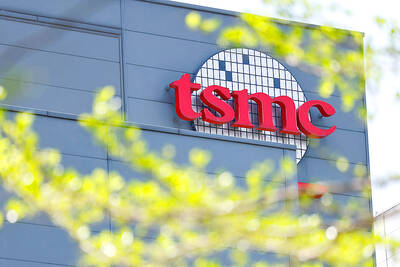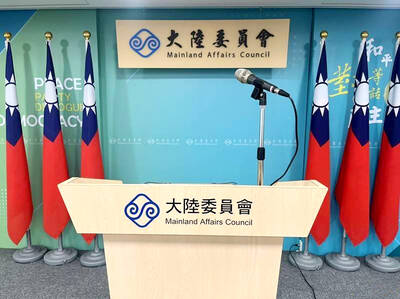At the heart of a sprawling corporate campus, in a hilltop building overlooking the immaculately shorn lawns, the sports fields and the hypermodern theater complex, young engineers crowded into a classroom.
They are India's best and brightest, with stellar grades that launched them into a high-tech industry growing at more than 25 percent annually.
And their topic of the day? Basic telephone skills.

PHOTO: AP
"Hello?" one young man said nervously, holding his hand to his ear like a phone. "Hello? I'd like to leave a message for Number 17. Can I do that?"
Nearly two decades into India's phenomenal growth as an international center for high technology, the industry has a problem: It's running out of workers.
There may be a lot of potential -- Indian schools churn out 400,000 new engineers, the core of the high-tech industry, every year -- but as few as 100,000 are actually ready to join the job world, experts say.
Instead, graduates are leaving universities that are mired in theory classes, and sometimes so poorly funded they don't have computer labs.
So the country's voracious high-tech companies, desperate for ever-increasing numbers of staffers to fill their ranks, have to go hunting.
"The problem is not a shortage of people," said Mohandas Pai, human resources chief for Infosys Technologies, the software giant that built and runs the Mysore campus for its new employees. "It's a shortage of trained people."
From the outside, this nation of 1.03 billion, with its immense English-speaking population, may appear to have a bottomless supply of cheap workers with enough education to claim more outsourced Western jobs.
But things look far different in India, where technology companies are spending millions of dollars in a frantic attempt to ensure their profit-making machine keeps producing.
"This is really the Achilles heel of the industry," said James Friedman, an analyst with Susquehanna Financial Group, a US-based investment firm, who has studied the issue.
"When we first started covering the industry, in 2000, there were maybe 50,000 jobs and 500,000 applicants," he said. Now there are perhaps 180,000 annual openings, but only between 100,000 and 200,000 qualified candidates.
For now, industry is keeping up, but only barely. A powerful trade group, the National Association of Software Services Companies (NASSCOM), estimates a potential shortfall of 500,000 technology professionals by 2010.
On the most basic level, it's a problem of success. The high-tech industry is expanding so fast that the population can't keep up with the demand for high-end workers.
Tata Consultancy Services, for instance, India's largest software company, hires around 3,000 people a month. The consulting firm Accenture plans to hire 8,000 in the next six months and IBM says it will bring on more than 50,000 additional people in India by 2010.
A shortage means something feared here -- higher wages.
Much of India's success rests on the fact that its legions of software programmers work for far less than those in the West -- often for one-fourth the salary. If industry can't find enough workers to keep wages low, the companies that look to India for things like software development will turn to competitors, from Poland to the Philippines, and the entire industry could stumble.
The responses range from private "finishing schools" polishing the computer skills of graduates to multimillion-dollar partnerships spanning business, government and higher education. The biggest companies have built elaborate training centers. The Mysore campus, for instance, was little more than scrub-filled fields when Infosys, the nation's second-largest software firm, based in the nearby technology hub of Bangalore, began building here in earnest three years ago.
In the US, the campus would be nothing unusual. But in India -- with its electricity outages, poverty and mountains of garbage -- the walled-in corporate fantasyland, watched over by armed guards, is anything but normal.
It has 120 faculty members, more than 80 buildings, 2,350 hostel rooms and a 46,451m2 education complex. There's a movie complex built inside a geodesic dome. An army of tireless workers sweeps the already-spotless streets and mows the already-perfect lawns.
Month by month, it's getting bigger. Today, some 4,500 students at a time attend the 16-week course for new employees. By September, there will be space for 13,000.
Infosys spent US$350 million on the campus, and will spend US$140 million this year on training, said Pai, the human resources chief.
"This is the enormous cost we have to pay to ensure we have enough people," he said.
Most industry leaders believe these investments will pay off, and India will remain competitive. But most are also guarded in their optimism.
"We should be able to get through this year, but if we don't get things like finishing schools into place we'll see an actual shortage," said Kiran Karnik, the NASSCOM chairman.
Much of the problem is rooted in a deeply flawed school system.
As India's economy blossomed over 15 years, spawning a middle class desperate to push their children further up the economic ladder, the higher education system grew dramatically. The number of engineering colleges, for instance, has nearly tripled.
But the problems have simply grown worse.
India has technical institutes that seldom have electricity, and colleges with no computers. There are universities where professors seldom show up. Textbooks can be decades old.
Even at the best schools -- and the government-run Indian Institutes of Technology are among the world's most competitive, with top-level professors and elaborate facilities -- there are problems.
The brutal competition to get into these universities means ambitious students can spend a year or more in private cram schools, giving up everything to study full-time for the entrance exams.
Instruction is by rote learning, and only test scores count.
"Everything else is forgotten; the capacity to think, to write, to be logical, to get along with people," Pai said.
The end product is smart, well-educated people who can have trouble with such professional basics as working on a team or good phone manners.
"The focus," he said, "is cram, cram, cram, cram."
Things are different at the Infosys campus.
"The premier concern in college was to get maximum marks," said Sanjay Joshi, a 22-year-old engineer midway through Infosys' training course. "Here, the focus is totally on learning."
Much of that learning is technical, mostly focusing on programming. But "soft skills" classes, as they're called, also include such things as e-mail etiquette and problem-solving.

EUROPEAN TARGETS: The planned Munich center would support TSMC’s European customers to design high-performance, energy-efficient chips, an executive said Taiwan Semiconductor Manufacturing Co (TSMC, 台積電), the world’s largest contract chipmaker, yesterday said that it plans to launch a new research-and-development (R&D) center in Munich, Germany, next quarter to assist customers with chip design. TSMC Europe president Paul de Bot made the announcement during a technology symposium in Amsterdam on Tuesday, the chipmaker said. The new Munich center would be the firm’s first chip designing center in Europe, it said. The chipmaker has set up a major R&D center at its base of operations in Hsinchu and plans to create a new one in the US to provide services for major US customers,

The Ministry of Transportation and Communications yesterday said that it would redesign the written portion of the driver’s license exam to make it more rigorous. “We hope that the exam can assess drivers’ understanding of traffic rules, particularly those who take the driver’s license test for the first time. In the past, drivers only needed to cram a book of test questions to pass the written exam,” Minister of Transportation and Communications Chen Shih-kai (陳世凱) told a news conference at the Taoyuan Motor Vehicle Office. “In the future, they would not be able to pass the test unless they study traffic regulations

‘A SURVIVAL QUESTION’: US officials have been urging the opposition KMT and TPP not to block defense spending, especially the special defense budget, an official said The US plans to ramp up weapons sales to Taiwan to a level exceeding US President Donald Trump’s first term as part of an effort to deter China as it intensifies military pressure on the nation, two US officials said on condition of anonymity. If US arms sales do accelerate, it could ease worries about the extent of Trump’s commitment to Taiwan. It would also add new friction to the tense US-China relationship. The officials said they expect US approvals for weapons sales to Taiwan over the next four years to surpass those in Trump’s first term, with one of them saying

BEIJING’S ‘PAWN’: ‘We, as Chinese, should never forget our roots, history, culture,’ Want Want Holdings general manager Tsai Wang-ting said at a summit in China The Mainland Affairs Council (MAC) yesterday condemned Want Want China Times Media Group (旺旺中時媒體集團) for making comments at the Cross-Strait Chinese Culture Summit that it said have damaged Taiwan’s sovereignty, adding that it would investigate if the group had colluded with China in the matter and contravened cross-strait regulations. The council issued a statement after Want Want Holdings (旺旺集團有限公司) general manager Tsai Wang-ting (蔡旺庭), the third son of the group’s founder, Tsai Eng-meng (蔡衍明), said at the summit last week that the group originated in “Chinese Taiwan,” and has developed and prospered in “the motherland.” “We, as Chinese, should never